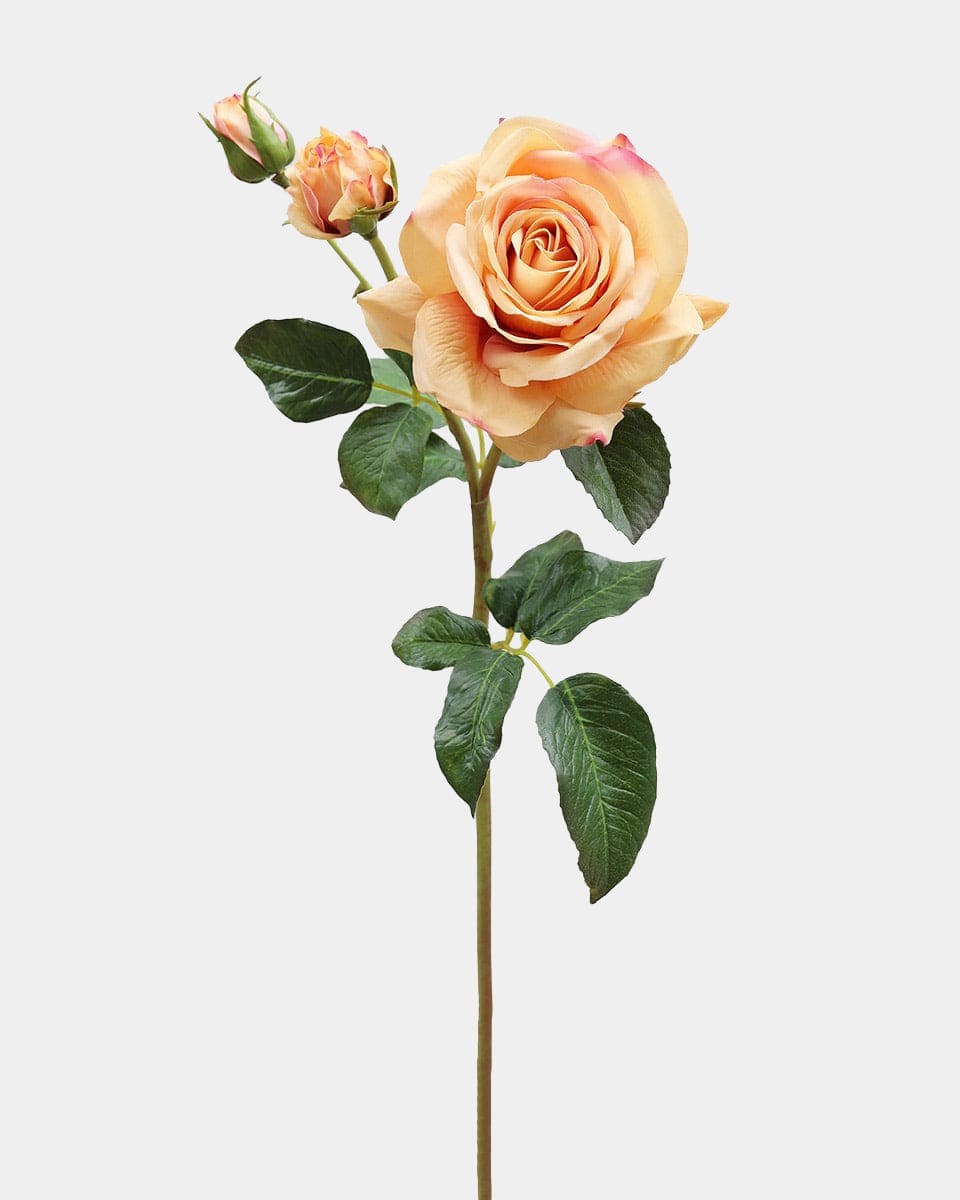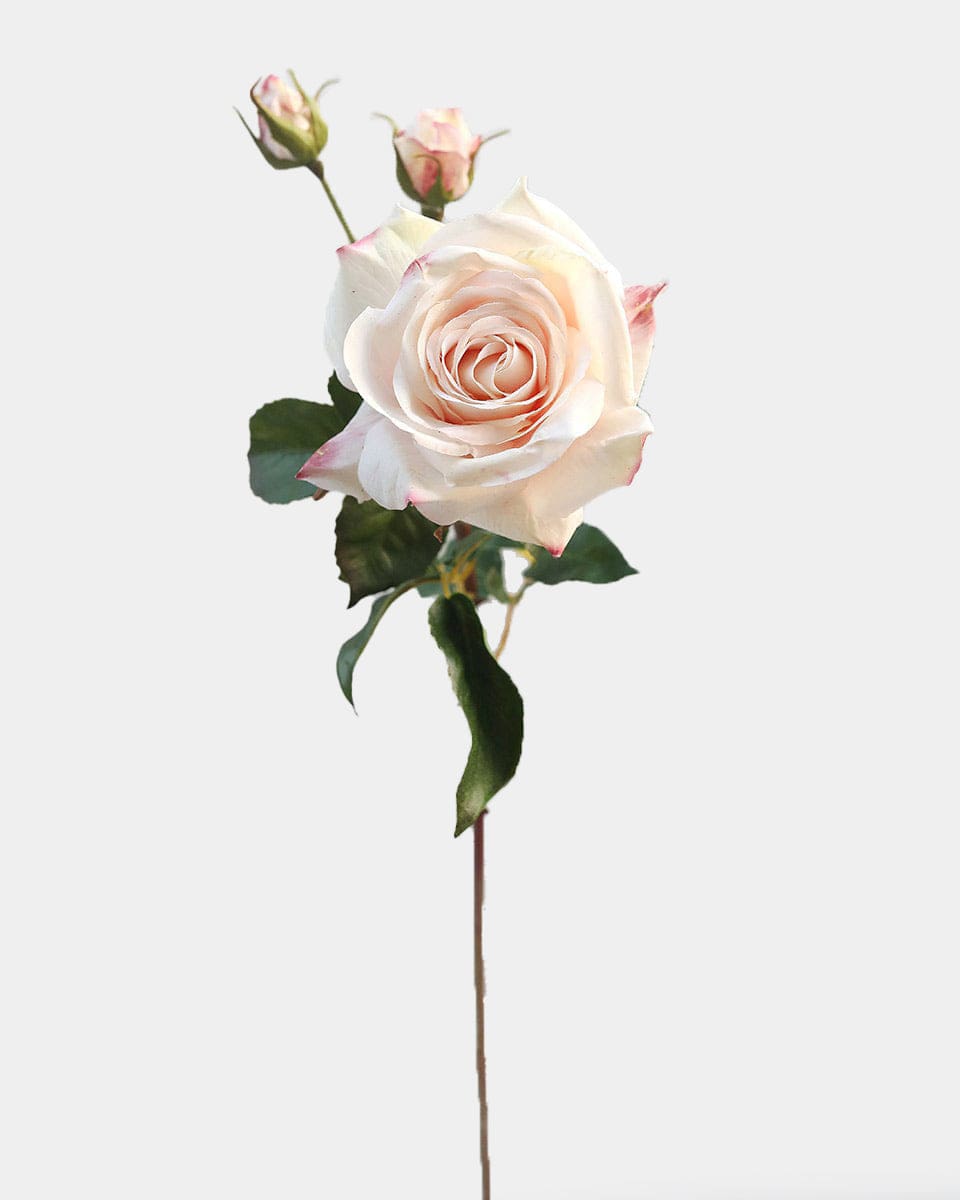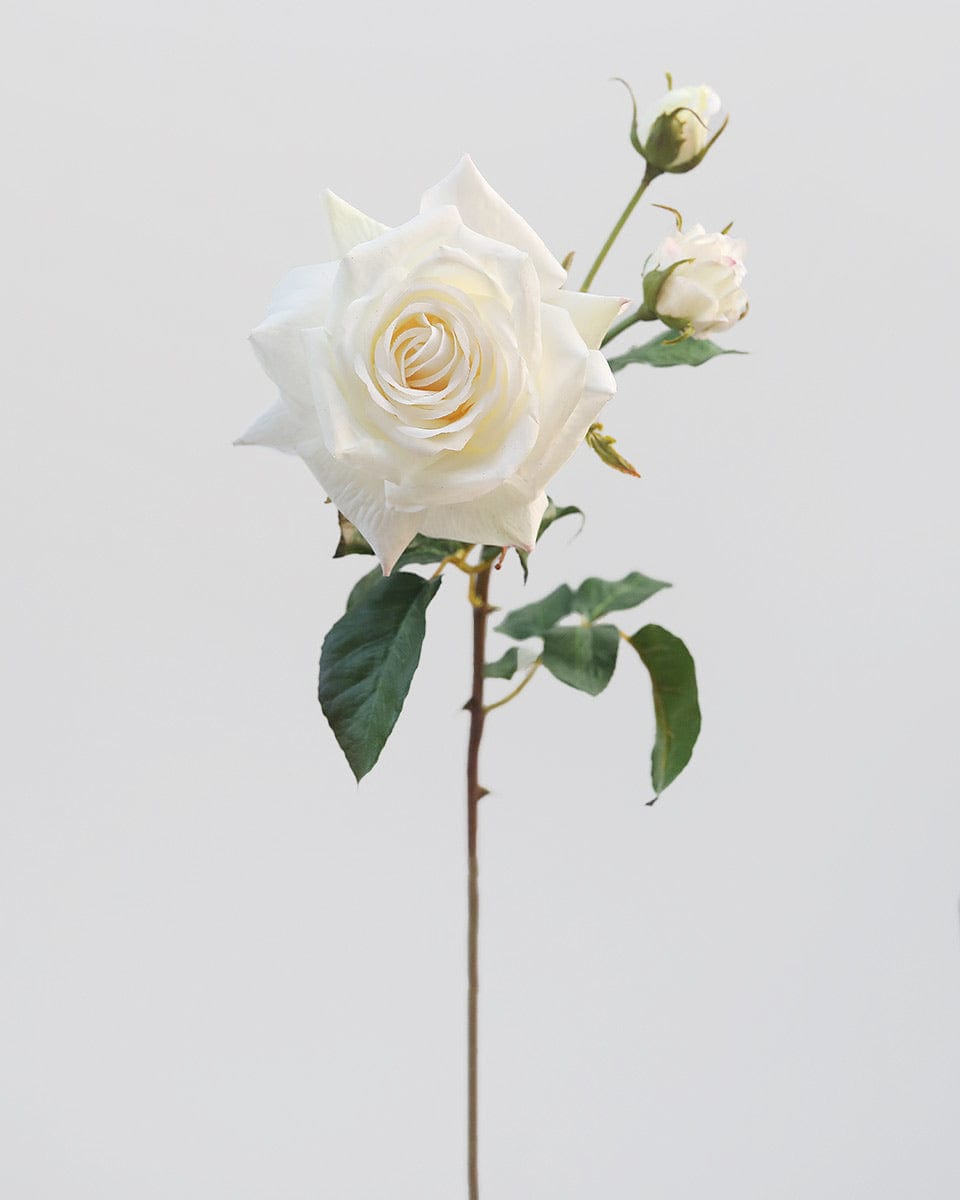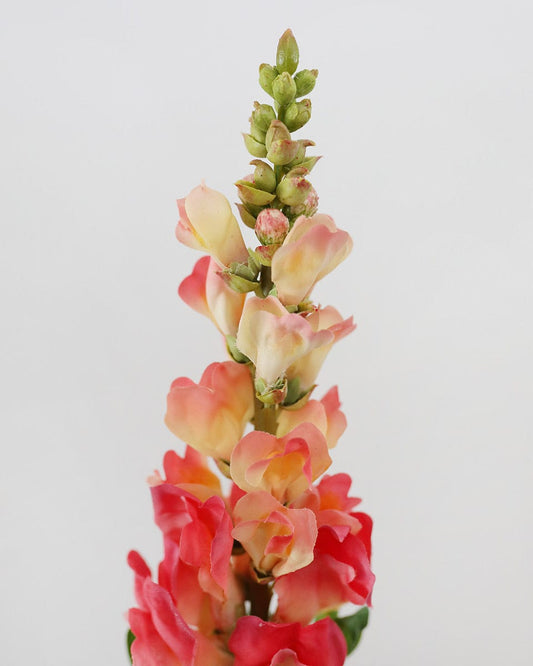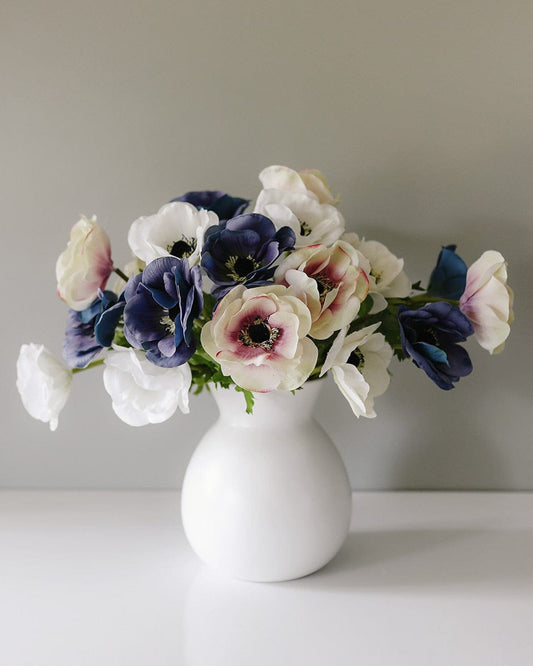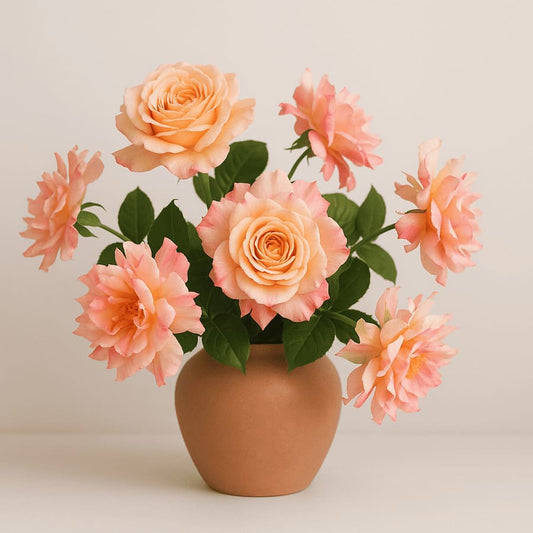Experimental Techniques: Cytology-Inspired Texturing for Ultra-Realistic Flowers

I stumbled across this fascinating research on cytology-inspired texturing approaches recently, and it completely validated everything I've been discovering in my work. The piece on photonic flower structures described exactly what I've been obsessing over—how those tiny microscopic details make all the difference. Reading about cellular architecture in botanical journals might seem excessive for artificial flower design, but honestly, it's where the magic happens.
The breakthrough moment came when I realized that real touch flowers aren't just about surface texture—they're about recreating the cellular-level patterns that our eyes unconsciously recognize as "natural." This cytology-inspired approach transforms artificial flowers from decorative objects into botanical recreations that fool even the most discerning eye.
Key Takeaways
- Cellular-level surface texturing creates ultra-realistic visual authenticity
- Biomimetic approaches replicate natural petal microstructures
- Advanced polymer engineering enables microscopic detail work
- Multi-layered texturing processes build depth and dimension
- Real Touch technology demonstrates practical cytology applications
Understanding Cellular Surface Architecture
The secret to creating truly convincing artificial flowers lies in understanding how natural petals work at the microscopic level. Natural flower petals have complex cellular structures that create subtle light interactions—tiny ridges, valleys, and surface variations that give petals their characteristic glow and depth. When I first discovered this through my botanical research, it revolutionized how I approached artificial flower evaluation.

Cytology-inspired texturing borrows techniques from completely different fields. These aren't random textures—they're precise replications of how actual petal cells organize themselves, creating the optical properties that make roses look like roses instead of plastic imitations.
To illustrate these cellular principles in practice, premium manufacturers apply this advanced technology. The Real Touch Prestige Sunset Rose serves as an ideal case study in biomimetic texturing, demonstrating exactly what I've been describing. Notice how the petal surface captures light differently—this is cellular-level detail work at its finest.
This particular rose demonstrates cellular-level texturing beautifully. The manufacturing process creates microscopic variations that mirror nature's imperfections, exactly what separates premium artificial flowers from basic alternatives. The sunset coloration—or is it more coral-pink? I sometimes debate the exact shade—shows how advanced pigmentation works with surface texturing to create authentic depth.
Advanced Polymer Engineering Techniques
The materials science behind cytology-inspired texturing involves sophisticated polymer engineering beyond traditional molding. Modern techniques use multi-stage polymerization processes where different polymer chains create varying surface densities, mimicking how natural cells cluster and organize. This approach creates authentic randomness—the kind of imperfection that makes natural flowers so captivating.
Variable-density construction represents the cutting edge of this technology. Advanced polymers create microscopic thick and thin areas that replicate how natural petals develop. Different cellular zones have different optical properties, creating the translucency patterns you see in fresh flowers. I've found this technique makes certain realistic artificial flowers exceptionally effective under various lighting conditions.
The most sophisticated manufacturers use "cytological mapping"—creating blueprints of how specific flower varieties organize their cellular structures, then engineering polymer formulations to replicate those patterns. This isn't guesswork; it's biomimetic engineering that honors the specific architectural patterns of each flower type.
Multi-Layered Texturing Processes
Creating authentic cellular texture requires multiple processing stages, each building upon the previous layer. The base polymer provides structural integrity, while secondary texturing adds the microscopic details that fool the human eye. Through extensive testing, I've discovered that successful cytology-inspired flowers typically use three to four distinct texturing layers.
The first layer establishes the basic cellular framework that mimics natural cell organization. Secondary layers add surface irregularities that create the micro-shadows and light-catching properties of real petals. Final layers include specialized coatings that adjust how light penetrates and reflects from the surface, creating that characteristic petal glow.
When examining artificial flowers that showcase these multi-layered approaches, the Real Touch Prestige Pink Rose provides an excellent example to follow. Using real touch technology, each petal demonstrates the subtle complexity that emerges from properly executed cellular texturing processes.
This rose showcases how multiple texturing stages create dimensional authenticity. The blush pink coloration works in harmony with the cellular surface patterns to create convincing depth. Each layer contributes to the overall effect—you can't achieve this level of realism with single-stage processing.
Professional Implementation and Applications
Successfully incorporating cytology-inspired flowers into design projects requires understanding how these advanced textures interact with different environments. The microscopic surface details that create authenticity under close inspection also affect how flowers perform in various lighting conditions. These scientifically-engineered surfaces enhance the flowers' versatility rather than limiting applications.
The key lies in recognizing that cytology-inspired texturing creates flowers that behave more like natural specimens. They respond to light changes throughout the day, showing different characteristics under morning sunlight versus evening lamplight. This dynamic quality makes them effective in residential settings where natural lighting varies constantly.
For collectors seeking ultimate botanical accuracy, the Real Touch Prestige White Rose represents the pinnacle of cytology-inspired engineering. Its pure coloration allows the surface texturing to demonstrate its full effect without color distraction.
This white rose demonstrates pure cellular texturing without color interference, making it perfect for studying how advanced surface engineering creates authentic botanical character. The pristine coloration reveals every subtle surface variation that contributes to its convincing appearance. If you're interested in seeing how this technology applies across different flower varieties, discover our expert-curated selection of the top 10 real touch flowers that showcase these advanced texturing techniques in various forms and colors.
When working with these advanced artificial flowers, remember that their sophisticated engineering makes them suitable for applications where traditional artificial flowers would fail. Museums, luxury residential projects, and high-end hospitality environments all benefit from the enhanced authenticity that cytology-inspired texturing provides.
Embracing the Science of Natural Beauty
The future of artificial flower design lies in this marriage of botanical science and engineering artistry. Cytology-inspired texturing represents more than improved manufacturing—it's a fundamental shift toward honoring the intricate beauty of natural systems through advanced technology. These scientifically-informed approaches create artificial flowers that embody the essential characteristics that make flowers so captivating.
As this technology continues evolving, I'm excited to see how deeper understanding of cellular architecture will push the boundaries of what's possible. The realistic flowers available today represent just the beginning of what cytology-inspired engineering can achieve. We're moving toward a future where the distinction between artificial and natural becomes beautifully irrelevant. Ready to experience these scientifically-engineered blooms yourself? Browse our complete real touch flower collection to find the perfect cytology-inspired specimens for your space.
Frequently Asked Questions
What exactly is cytology-inspired texturing in artificial flowers?
Cytology-inspired texturing replicates the microscopic cellular patterns found in natural flower petals using advanced polymer engineering. This creates surface variations that mirror how real petal cells organize, resulting in authentic light interaction and visual depth that conventional artificial flowers can't achieve.
How can I identify flowers that use these advanced texturing techniques?
Look for subtle surface variations that feel natural rather than uniformly smooth. Premium cytology-inspired flowers will show different light reflection patterns as you change viewing angles, and they'll have tactile authenticity when touched. Real Touch technology represents the current pinnacle of this approach.
Are cytology-inspired artificial flowers more expensive than traditional options?
Yes, the advanced engineering and multi-stage manufacturing processes make these flowers more costly than basic artificial options. However, their enhanced realism and durability often justify the investment, particularly for high-visibility applications or permanent installations where authenticity matters.
Do these scientifically-engineered flowers require special care or maintenance?
No special maintenance is required beyond occasional gentle dusting. The advanced polymer engineering actually makes these flowers more durable than traditional artificial flowers, while their sophisticated surface textures help hide dust accumulation better than smooth surfaces. For detailed instructions on maintaining your cytology-inspired blooms, explore our comprehensive guide to caring for real touch flowers, which covers everything from weekly dusting techniques to long-term storage methods.




